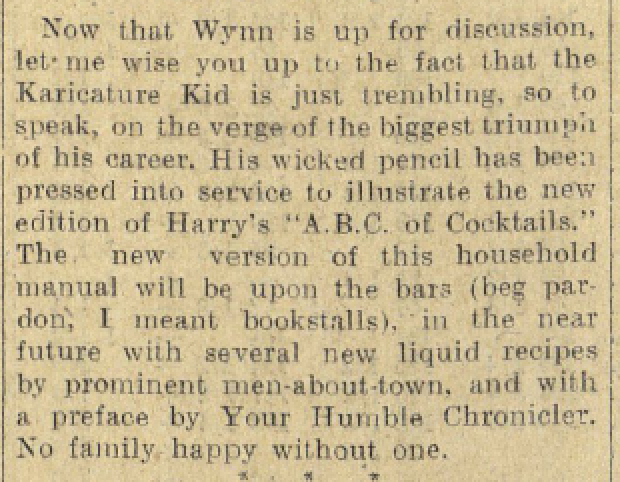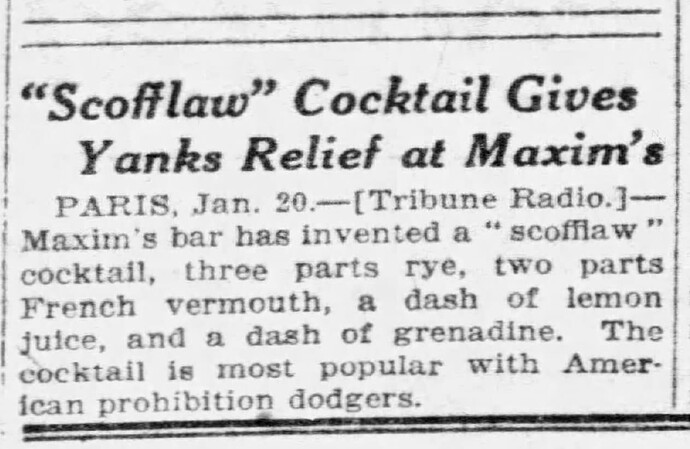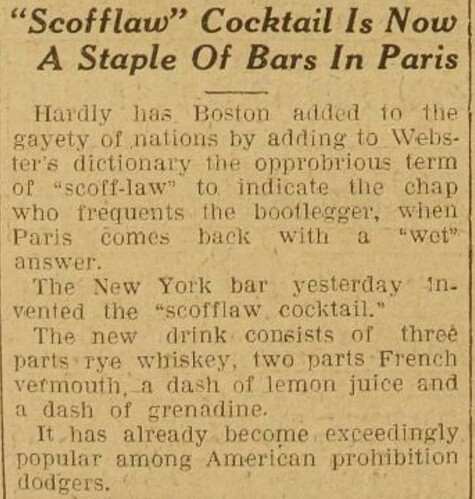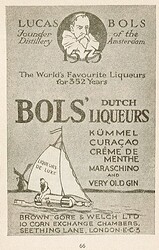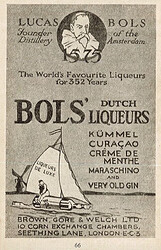Taken collectively, the dozen editions of his ABC of Mixing Cocktails that Harry McElhone published between the early 1920s and the early 1950s are among the most influential cocktail books of all time. They mark the earliest appearances of many important drinks and are a window into the internationalization of cocktail culture as it occurred. Unfortunately, none of those editions are dated (only McElhone’s self-published 1927 Barflies and Cocktails, an illustrated version of the ABC book, bears a date).
In the spirit of this old thread:
I’d like to see if we can arrive at a more or less firm chronology of the editions.
For the first three, it’s easy: they appear in the annual English Catalogue of Books, which lists every book published in England.
That gives us this:
First Edition: December, 1923. 292 numbered drinks.
Second Edition (more accurately, a second printing, with different ads): February, 1923. 292 numbered drinks.
Third Edition: March, 1925. ? numbered drinks.
After this, Harry moved to Paris and the books stopped being published in England, although they were still edited and printed there. That was not enough to keep them in the ECB. This means that we have to rely on internal evidence, inscriptions, or press mentions to date the rest.
I haven’t been able to examine the fourth, sixth and seventh editions (or, for that matter, the third). I do know that, like the eighth and ninth, the sixth was called not an “edition” but an “impression,” which suggests it had no new material. As for the seventh, I don’t even know if it existed at all; there appears to be no record of it.
Internal and other evidence gives these dates for the remaining editions:
Fifth Edition: 1926 (dated from the inclusion of the I.B.F. and a Bols ad giving how long they had been in business). 324 numbered drinks.
Eight Impression: 1930-1931 (Dated from the Tunnel Cocktail, invented at the end of December, 1929, and a signature from 1931 in one surviving copy). 339 numbered drinks.
Ninth Impression: 1931-1932 (Dated from its place between the Eighth Impression and the Tenth Edition). 339 numbered drinks.
Tenth Edition: 1933-1934 (Dated from Dean & Son’s new address, occupied in August, 1933, and a June, 1934 newspaper mention). 374 numbered drinks.
Eleventh Edition: 1937-1939 (Dated from the Coronation 1937 cocktail and the outbreak of World War II). 390 numbered drinks.
New Edition: 1952-1953 (Dated from a Canadian Club ad, which mentions the “late” King George VI but not the new Queen). 411 numbered drinks.
Here, then, are my questions, for which any information at all would be greatly appreciated.
Has anybody seen a copy of the seventh edition/impression?
How many numbered drinks are in the third, fourth, sixth, and seventh editions/impressions?
Does anybody have any information that can date the fourth, sixth, or seventh editions/impressions, or narrow down the dates for the eighth-eleventh and New ones?
The fifth edition has 32 new drinks reflecting Harry’s move to Paris. Were they in the third or fourth editions? Likewise, were the fifteen extra drinks the eighth impression has compared to the fifth edition added in the sixth or seventh?
Was the missing seventh edition/impression actually Barflies and Cocktails? (The fact that they were from different publishers in different countries–Harry self-published BaC in Paris–somewhat militates against this.)
Which edition/impression was the main drinks section of Barflies and Cocktails based on?
What else am I missing?
If we can nail down the editions, we can nail down the drinks they contain. Then we’d be getting somewhere.

